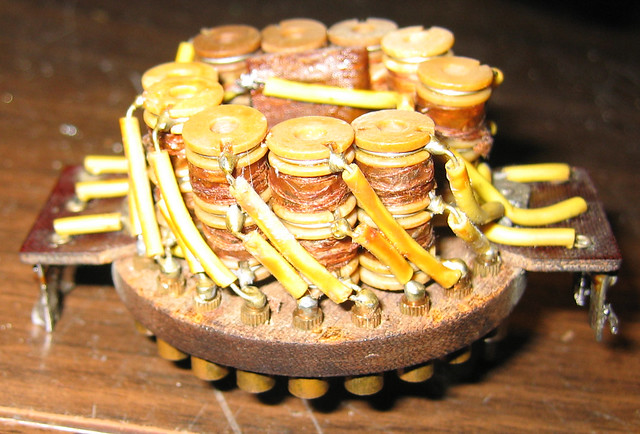Apologies if this has been asked before many a time...
Is there any inherent problem in using wirewounds in audio signal parts of circuits ?
Can the inductance interact with other local components and result in a tuned oscillation or somesuch ?
Also, how much real difference in inductance is there between a wirewound and a metal film resistor, given that when i have scratched off the outer coatings of some metal films I have found a spiral film layer, which presumably also has inductance.
I just ask since I have a large pile of old style 5W green enamel coated wirewounds (various values less than 10K) and I was wondering if I could find some use for them in a tube build I am working on at the moment (namely the Redd 47 pre). I had already figured I will need a 5W-10W wirewound for the plate dropper resistor, but I was wondering what the effect would be of using wirewounds in other parts of this circuit.
Also, I wonder are wirewounds more or less reliable over time than metal films of the same wattage rating ? I would have thought wirewounds would be more beefy, but think I can recall some people saying wirewounds can vibrate and perhaps that would lead to internal breakage. (?)
Noisewise, I would have thought WW's would win the day in audio circuits, but of course there are many more other considerations than just noise to take into account. I rarely see WW's used in audio signal parts of circuits so there must be some reason not to use them.
Curious to know what those reasons might be.
Is there any inherent problem in using wirewounds in audio signal parts of circuits ?
Can the inductance interact with other local components and result in a tuned oscillation or somesuch ?
Also, how much real difference in inductance is there between a wirewound and a metal film resistor, given that when i have scratched off the outer coatings of some metal films I have found a spiral film layer, which presumably also has inductance.
I just ask since I have a large pile of old style 5W green enamel coated wirewounds (various values less than 10K) and I was wondering if I could find some use for them in a tube build I am working on at the moment (namely the Redd 47 pre). I had already figured I will need a 5W-10W wirewound for the plate dropper resistor, but I was wondering what the effect would be of using wirewounds in other parts of this circuit.
Also, I wonder are wirewounds more or less reliable over time than metal films of the same wattage rating ? I would have thought wirewounds would be more beefy, but think I can recall some people saying wirewounds can vibrate and perhaps that would lead to internal breakage. (?)
Noisewise, I would have thought WW's would win the day in audio circuits, but of course there are many more other considerations than just noise to take into account. I rarely see WW's used in audio signal parts of circuits so there must be some reason not to use them.
Curious to know what those reasons might be.





















![Soldering Iron Kit, 120W LED Digital Advanced Solder Iron Soldering Gun kit, 110V Welding Tools, Smart Temperature Control [356℉-932℉], Extra 5pcs Tips, Auto Sleep, Temp Calibration, Orange](https://m.media-amazon.com/images/I/51sFKu9SdeL._SL500_.jpg)











